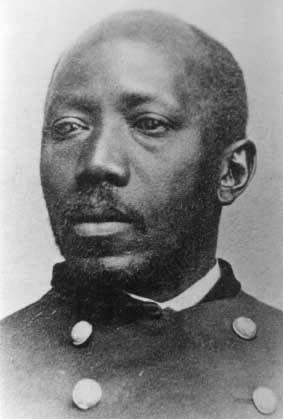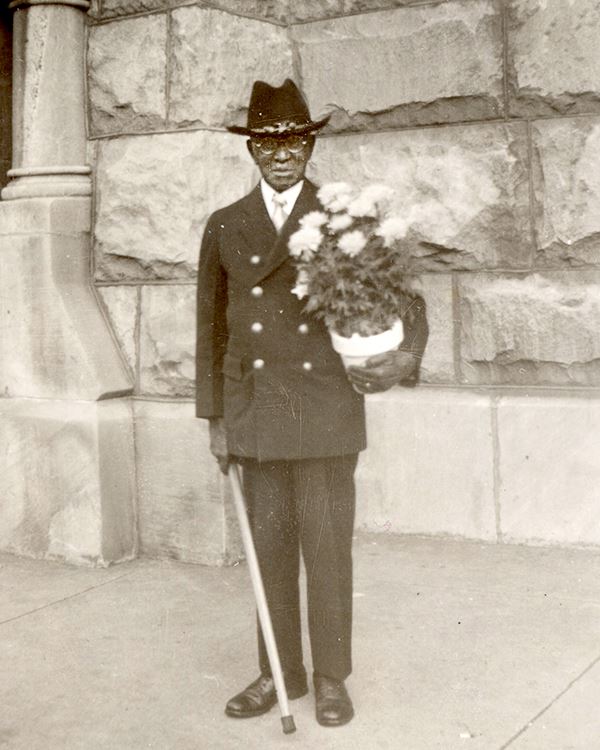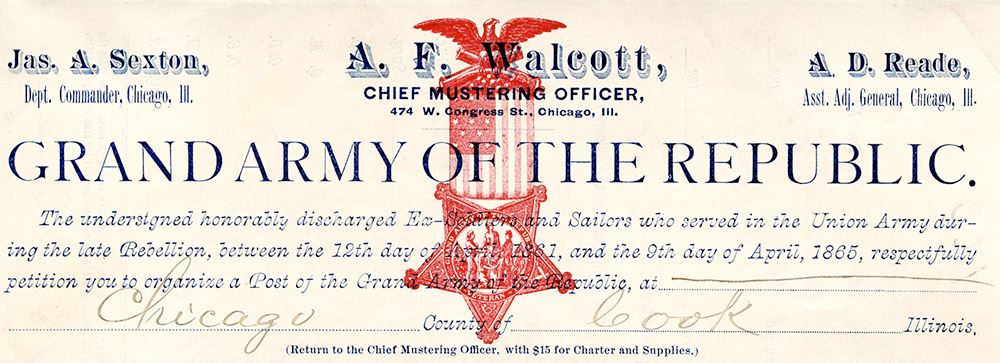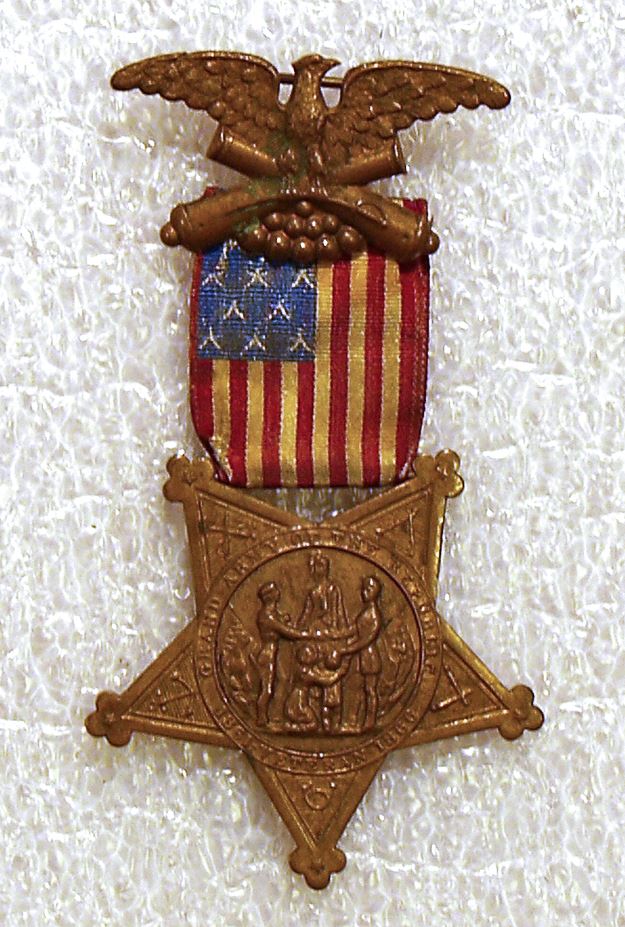By Christopher Schnell
For the past few years, ALPLM staff have been working to preserve the records of the Illinois posts of the Grand Army of the Republic. Recently staff completed the meticulous work of mending and stabilizing this 1888 post charter from the Martin R. Delany Post #663. The charter bears the names of the ten charter members, all of them Chicago-based Black veterans of the Union war effort.
Many of them served in so-called “United States Colored Troops” (or Cavalry) regiments, a term created by the U.S. War Department in 1863 to differentiate these new regiments composed of Black enlistees from white regiments. The out-of-use terms “Colored” and “U.S.C.T.” have been maintained here for clarity in identifying regimental affiliation.
The charter members of the Martin R. Delany post #663 included:
- Enos Bond, Private, Company A, 17th Regiment, U.S.C.T.
- Lewis H. Thompson, Private, Co. K, 5th Massachusetts Cavalry
- William Banks, Private, Co. C, 1st Regiment, Michigan Colored Infantry
- William French, Sargent, Co. A, 109th U.S.C.T.
- Peter French, Corporal, Co. C, 6th United States Colored Cavalry
- Lewis McGowan, 1st Sargent, Co. H, 109th U.S.C.T.
- Moses McGowan, Private, Co. A, 109th U.S.C.T.
- Walter E. Johnson, Private, Co. K, 14th Regiment, Rhode Island Heavy Artillery
- Shadrick Conway, Sargent, Co. G., 54th Regiment, Massachusetts Infantry
- Alexander Jackson, Private, Co. C, 17th U.S.C.T.
The G.A.R. was a popular Civil War veterans’ organization started in 1866 in Decatur and Springfield, Ill. It soon spread throughout the United States, peaking in membership at over 400,000 in 1890. Illinois eventually had approximately 800 posts. The G.A.R. worked to preserve the memory of Civil War veterans of the Union Army and Navy through public observance, monument dedications, lobbying, and local charity. It had a profound effect on late-19th century politics, with its membership providing the Republican Party, the party of Lincoln and Grant, with a solid voting bloc in northern states. The organization used this political power to encourage the federal government to establish a robust veteran’s pension program.
.jpg) The G.A.R.’s Delany post was named after Martin Robison Delany, an abolitionist, journalist, and physician who became an Army major. Abraham Lincoln described him as “most extraordinary.” Post 663 chose to honor Delany by naming their post after him the year he died, 1885.
The G.A.R.’s Delany post was named after Martin Robison Delany, an abolitionist, journalist, and physician who became an Army major. Abraham Lincoln described him as “most extraordinary.” Post 663 chose to honor Delany by naming their post after him the year he died, 1885.
The G.A.R. was also a racially integrated public institution in a time when separate and unequal was pervasive in the public sphere, both north and south. While G.A.R. membership at the national and state level was integrated, most activity occurred at the local level, in “posts” typically named after deceased officers and inspirational leaders. At the community level, posts could be segregated. For instance, Chicago had at least two all-Black posts, John Brown (Post #50) and Martin R. Delany (Post #663), while it had at least 37 all-white posts. We know of at least eleven Black G.A.R. posts in Illinois: after the two Chicago posts, there were posts in Brooklyn, Cairo, East St. Louis, Jacksonville, Metropolis, Mound City, Murphysboro, Quincy, and Springfield. Historian Barbara A. Gannon reviewed memorial lists compiled by the Department of Illinois headquarters, and identified 48 integrated posts, indicating that the common bonds of Civil War veterans could, in many instances, breach the social pressure to segregate along racial lines.
One of the Department of Illinois’s longtime administrative leaders was Quartermaster James Henry Lewis, a Black veteran who worked as a groom and horse trader near Palatine, Ill., before enlisting in a U.S. Colored Cavalry unit in Mississippi during the Civil War. Through his leadership in Chicago’s John Brown post and in the state headquarters, Black posts participated alongside white and integrated posts in traditional G.A.R. activities: to observe Memorial Day cemetery exercises and church services to honor the Civil War dead, to march together in patriotic parades, such as one held in Chicago to commemorate the Constitution Centennial in 1887, and to attend annual meetings, like when the Martin R. Delany post joined the 7,000 member Illinois delegation to attend the national “encampment” at Detroit in 1891.
 James Henry Lewis
James Henry Lewis
The charter was the foundational document for G.A.R. posts, issued by the “Department” or state headquarters. It indicated acceptance of the new membership into the fraternal organization, the post’s name, number, and location, and the date of issuance. Along with artistic representations of military service, the center of the charter includes the G.A.R. membership badge and the certification, where the department commander signed the document, includes a foil seal.
 An application to form a G.A.R. post in Chicago.
An application to form a G.A.R. post in Chicago.
When posts ceased their operations (for the Martin R. Delany post, this happened sometime after 1891), the members were required to turn their records, including their charters, over to headquarters. Charters -- large documents, 17 x 22 inches is a typical size -- were folded several times to fit in G.A.R. records boxes. When retrieving post records for researchers, ALPLM staff would occasionally find charters, or the remains of them, that had to be placed on hold for conservation before they could be viewed or imaged. Staff began a review of all 48.41 linear feet of records in 2019 and identified 269 charters. Meanwhile our conservation department, Bonnie Parr and Ginny Lee, began the exacting work of carefully “relaxing,” or unfolding long-folded documents, cleaning, mending, deacidifying, and rehousing (mylar sleeves and oversize folders stored in flat drawers). Scores of charters had to be mended and lined using acid-free tissue to support charters that had come completely apart due to the folds and deterioration.
The work of maintaining these important historical documents serves a number of purposes. By identifying and restoring the G.A.R. charters, they can be made available to researchers to help them tell stories about the Civil War era, as well as of their community and family histories. By working on individual documents, or by taking the time to examine an individual set of records, we can raise up the stories of underrepresented members of our collective past.
Finally, with restored charters as a starting point, we can continue the G.A.R.’s work of honoring the sacrifices of Civil War veterans by going beyond the ink and paper to recover the stories of the people who once fought to restore the Union and end slavery.
 A G.A.R. membership badge
A G.A.R. membership badge
Christopher Schnell is the ALPLM’s manuscripts manager.